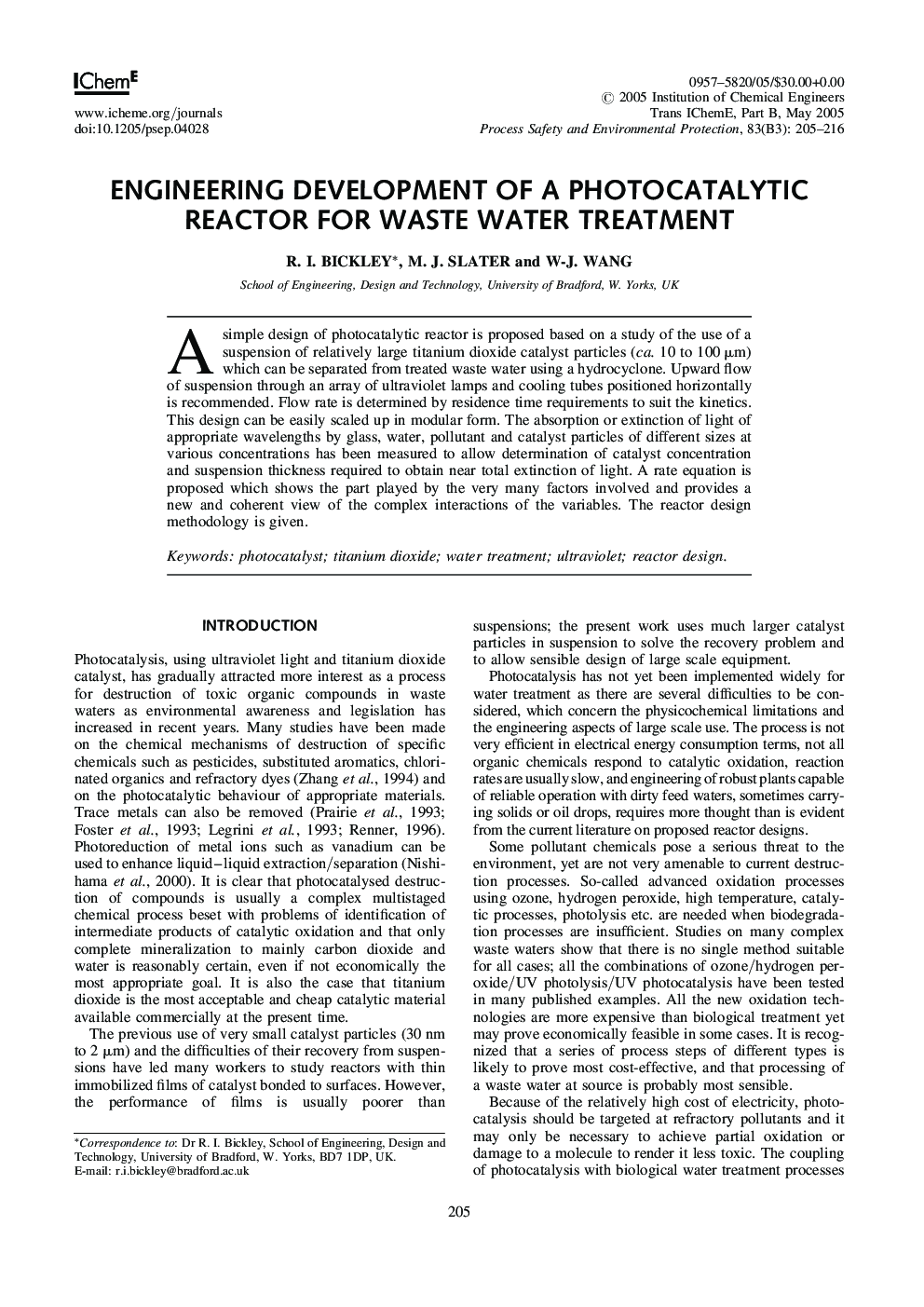| Article ID | Journal | Published Year | Pages | File Type |
|---|---|---|---|---|
| 10374167 | Process Safety and Environmental Protection | 2005 | 12 Pages |
Abstract
Asimple design of photocatalytic reactor is proposed based on a study of the use of a suspension of relatively large titanium dioxide catalyst particles (ca. 10 to 100 μm) which can be separated from treated waste water using a hydrocyclone. Upward flow of suspension through an array of ultraviolet lamps and cooling tubes positioned horizontally is recommended. Flow rate is determined by residence time requirements to suit the kinetics. This design can be easily scaled up in modular form. The absorption or extinction of light of appropriate wavelengths by glass, water, pollutant and catalyst particles of different sizes at various concentrations has been measured to allow determination of catalyst concentration and suspension thickness required to obtain near total extinction of light. A rate equation is proposed which shows the part played by the very many factors involved and provides a new and coherent view of the complex interactions of the variables. The reactor design methodology is given.
Related Topics
Physical Sciences and Engineering
Chemical Engineering
Chemical Health and Safety
Authors
R.I. Bickley, M.J. Slater, W.-J. Wang,
